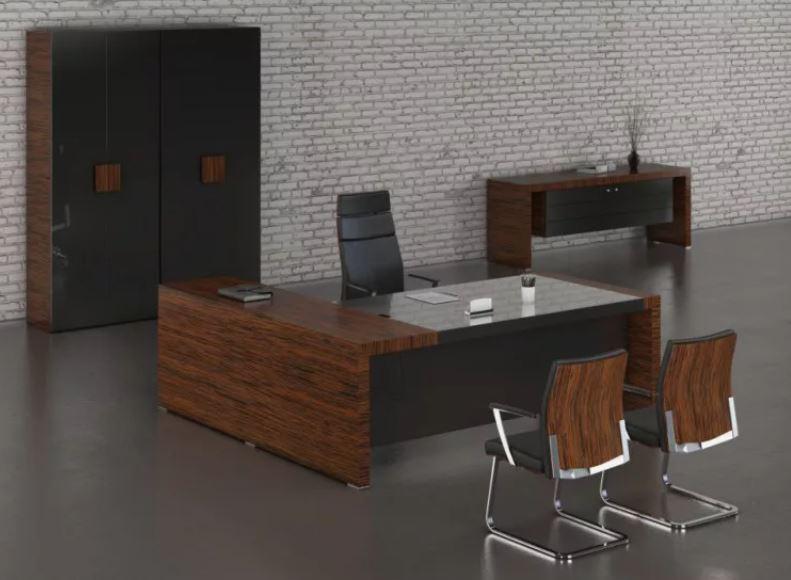Key Features to Look for in an Ergonomic Office Chair

When shopping for an ergonomic office chair there are several critical features to keep in mind. First and foremost is lumbar support. The lower back has a natural inward curve, and prolonged sitting without proper support can flatten this curve, leading to strain and discomfort. An ideal office chair should have adjustable lumbar support that allows you to maintain that natural posture throughout the day. Next is seat height adjustment. Everyone has a different desk setup, body height, and leg length, so being able to adjust your seat ensures that your feet remain flat on the floor while your knees stay at a 90-degree angle. Other vital components include adjustable armrests, breathable mesh backing, 360-degree swivel, and a reclining mechanism. All these elements work together to provide maximum comfort and reduce the risk of repetitive stress injuries.
How an Office Chair Influences Productivity and Focus
Believe it or not, the kind of office chair you use can significantly influence your productivity levels. A well-designed office chair supports your posture and reduces the physical strain caused by long hours of desk work. This support helps you stay focused and minimizes the frequent need to stretch or adjust due to discomfort. When you're not distracted by backaches or numb legs, you can dedicate your full attention to your tasks. Additionally, features like smooth mobility, adjustable tilt, and proper armrest placement can create a more dynamic work environment, allowing users to move freely and naturally throughout the day. Studies have shown that workers in ergonomically optimized setups are 17% more productive and report fewer health complaints.
Office Chair Designs: From Executive to Task Seating
Office chairs come in many shapes and styles depending on their purpose and the user's preferences. Executive chairs are typically large, plush, and luxurious, often made with leather or high-quality fabric. These chairs are ideal for high-level managers or individuals who want comfort paired with a bold aesthetic. Then there are task chairs, which are simpler, smaller, and more functional. Task chairs are ideal for shared workspaces or for users who need mobility and multi-directional movement. Mesh chairs are also gaining popularity thanks to their breathability and lightweight design. For those working in creative industries or collaborative environments, stools and saddle chairs provide a unique seating experience that promotes movement and helps with posture alignment. No matter your profession, there's an office chair design that suits your needs and work style.
Tips for Maintaining Your Office Chair for Long-Term Use
Just like any tool or piece of equipment, your office chair needs regular maintenance to stay in optimal condition. First, make it a habit to clean the chair regularly, especially if it features fabric upholstery that can collect dust and dirt. Use a vacuum cleaner with a brush attachment or a lint roller to remove surface debris. If your chair has wheels, clean them frequently to prevent the accumulation of hair, dust, and debris that could affect mobility. For leather or faux leather chairs, use a damp cloth with mild soap and dry it immediately afterward. Periodically check all the screws, bolts, and levers to ensure they are tight and functioning correctly. Lubricate the moving parts like the tilt and height adjustment mechanisms to prevent squeaking or jamming. Proper care ensures that your chair lasts longer and performs well throughout its lifespan.
Common Mistakes to Avoid When Choosing an Office Chair
One of the biggest mistakes people make when choosing an office chair is prioritizing style over ergonomics. While a sleek, designer look may appeal visually, it shouldn’t come at the cost of comfort or support. Another common error is purchasing a chair without trying it first. Chairs are a highly personal choice, and what works for one person may not work for another. Sitting in the chair for at least 10 minutes before buying can give you a sense of how supportive and adjustable it is. Also, avoid chairs that lack sufficient adjustment options. A good office chair should let you customize at least the seat height, backrest angle, and armrest position. Lastly, choosing the wrong size can lead to awkward sitting postures and discomfort. Be sure to measure your desk height and compare it with the chair's range before making a purchase.
Office Chair Trends in 2025: What’s Hot in the Market
The office chair market has evolved rapidly over the years, especially as hybrid and remote work models become more widespread. In 2025, we’re seeing a rise in sustainable and eco-friendly office chairs made from recycled materials. Brands are also leaning into minimalistic designs that blend comfort with aesthetic appeal. Smart chairs with posture detection sensors and app connectivity are entering the market, allowing users to monitor sitting habits and receive reminders to move or adjust posture. Color trends have shifted from traditional black and grey to earthy tones like sage green, muted blues, and soft beige, reflecting a more calming workspace. Manufacturers are also focusing on chairs that can be easily dismantled for recycling or upgrading components, making them more cost-effective in the long run.
The Role of an Office Chair in Remote Work Culture
Remote work is no longer a temporary trend—it's now a permanent aspect of many people's professional lives. And with that change comes the need for better home office setups, starting with the right office chair. Working from home can blur the lines between comfort and productivity, and using a kitchen stool or couch often leads to poor posture and chronic pain. An ergonomic office chair helps create a dedicated, health-conscious work zone, improving not just physical well-being but also mental clarity. When you have a comfortable and supportive place to sit, you’re more likely to stick to a productive routine. It also separates “work mode” from “relaxation mode,” reinforcing healthy work-life boundaries. In short, for remote professionals, an office chair is not a luxury—it's a necessity.
Conclusion: Investing in the Right Office Chair is Investing in Yourself
At the end of the day, the office chair you choose has a direct effect on how you work, how you feel, and how productive you are. Skimping on quality or ergonomics can lead to unnecessary discomfort and long-term health issues. By investing in a well-designed and supportive seating solution, you are not only enhancing your workflow but also taking care of your physical and mental health. Whether you work in a corporate setting or from the comfort of your home, the value of the right office chair cannot be overstated. For those seeking both functionality and long-lasting comfort, office chair is a brand you can trust to elevate your workspace experience.






